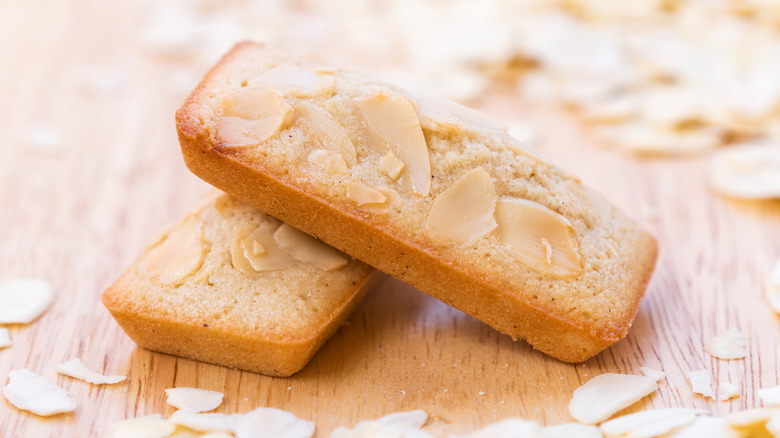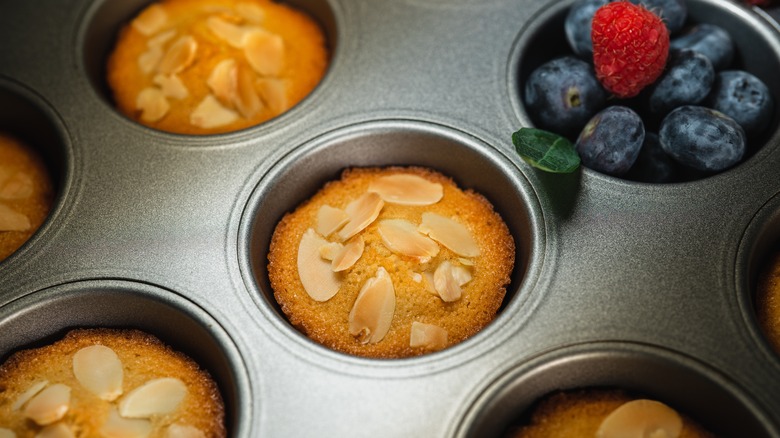The Sweet History Of Financiers
When many people think of French pastries, they imagine sweet perfection — colorful, glistening creations of flour and sugar that dazzle through patisserie windows. They imagine complicated recipes that require precision, experience, and steady hands. For the most part, this is true. The French are known as masters when it comes to the art of pastry. They create some of the most delicious, beautiful treats on the planet, but not all patisserie is the same. Many are approachable enough for anyone to conquer in their home kitchens — madeleines, galettes, and palmier cookies come to mind. Simple as they may be, they taste as wonderful and satisfying as even the fanciest of desserts.
French financiers (pronounced fee-non-see-ay) fit into this category perfectly. Found in some of Paris' most renowned pastry shops alongside raspberry charlottes and chocolate eclairs, they are small cakes flavored with brown butter and nuts, and they come in a variety of shapes. They do not sit on a delicate layer of pastry cream or include layers of precariously prepared filo dough, but they have been in demand since the late 19th century, per Serious Eats. Humble as they are, their name and classic shape were inspired by some of the highest of Parisian society.
Money, power, and cakes
Serious Eats explains that financiers were inspired by cakes founded by nuns of the Order of the Visitation in France. Called visitandine, they were vanilla sponge cakes. Food blog Delightful Repast suggests that the cakes came about in an effort to not be wasteful. Apparently, the nuns used egg yolks in some of their art, which left an abundance of egg whites, a key ingredient in visitandine. In the late 19th century, a baker named Lasne operated a bakery near Paris' financial district. His clientele included many men who worked in banking and finance, and in an effort to appeal to them, he began baking visitandine in the shape of small rectangles. They resembled bars of gold, giving them the name financiers.
MasterClass describes financiers as small cakes made with browned butter, egg whites, white flour, and ground almond meal. They should be moist on the inside with a pleasant crisp outer shell. Though classically made with almonds, many bakers also use hazelnuts or pistachios. They are similar in size and texture to French madeleines, but they are made with different ingredients. For the classic rectangular shape, you'll need a specific financier mold, but if you don't have one, a mini muffin pan works great.

